Potrebujeme váš súhlas na využitie jednotlivých dát, aby sa vám okrem iného mohli ukazovať informácie týkajúce sa vašich záujmov. Súhlas udelíte kliknutím na tlačidlo „OK“.
ASTM D7300-11
Standard Test Method for Laboratory Determination of Strength Properties of Frozen Soil at a Constant Rate of Strain
Automaticky preložený názov:
Štandardná skúšobná metóda pre laboratórne stanovenie pevnostných vlastností Mrazené pôdy pri konštantnej rýchlosti deformácie
NORMA vydaná dňa 1.11.2011
Informácie o norme:
Označenie normy: ASTM D7300-11
Poznámka: NEPLATNÁ
Dátum vydania normy: 1.11.2011
Kód tovaru: NS-38108
Počet strán: 7
Približná hmotnosť: 21 g (0.05 libier)
Krajina: Americká technická norma
Kategória: Technické normy ASTM
Kategórie - podobné normy:
Anotácia textu normy ASTM D7300-11 :
Keywords:
deformation, frozen soil, strength, strain, strain rate, stress, temperature, uniaxial compression, ICS Number Code 13.080.99 (Other standards related to soil quality)
Doplňujúce informácie
| Significance and Use | ||||||||
|
Understanding the mechanical properties of frozen soils is of primary importance to frozen ground engineering. Data from strain rate controlled compression tests are necessary for the design of most foundation elements embedded in, or bearing on frozen ground. They make it possible to predict the time-dependent settlements of piles and shallow foundations under service loads, and to estimate their short and long-term bearing capacity. Such tests also provide quantitative parameters for the stability analysis of underground structures that are created for permanent or semi-permanent use. It must be recognized that the structure of frozen soil in situ and its behavior under load may differ significantly from that of an artificially prepared specimen in the laboratory. This is mainly due to the fact that natural permafrost ground may contain ice in many different forms and sizes, in addition to the pore ice contained in a small laboratory specimen. These large ground-ice inclusions (such as ice lenses) will considerably affect the time-dependent behavior of full-scale engineering structures. In order to obtain reliable results, high-quality intact representative permafrost samples are required for compression strength tests. The quality of the sample depends on the type of frozen soil sampled, the in situ thermal condition at the time of sampling, the sampling method, and the transportation and storage procedures prior to testing. The best testing program can be ruined by poor-quality samples. In addition, one must always keep in mind that the application of laboratory results to practical problems requires much caution and engineering judgment. Note 1—The quality of the result produced by this standard is dependent on the competence of the personnel performing it, and the suitability of the equipment and facilities used. Agencies that meet the criteria of Practice D3740 are generally considered capable of competent and objective testing/sampling/inspection/etc. Users of this standard are cautioned that compliance with Practice D3740 does not in itself assure reliable results. Reliable results depend on many factors; Practice D3740 provides a means of evaluating some of those factors. |
||||||||
| 1. Scope | ||||||||
|
1.1 This test method covers the determination of the strength behavior of cylindrical specimens of frozen soil, subjected to uniaxial compression under controlled rates of strain. It specifies the apparatus, instrumentation, and procedures for determining the stress-strain-time, or strength versus strain rate relationships for frozen soils under deviatoric creep conditions. 1.2 Values stated in SI units are to be regarded as the standard. 1.3 All observed and calculated values shall conform to the guidelines for significant digits and rounding established in Practice D6026. 1.3.1 For the purposes of comparing measured or calculated value(s) with specified limits, the measured or calculated value(s) shall be rounded to the nearest decimal or significant digits in the specified limits. 1.3.2 The procedures used to specify how data are collected/recorded or calculated, in this standard are regarded as the industry standard. In addition, they are representative of the significant digits that generally should be retained. The procedures used do not consider material variation, purpose for obtaining the data, special purpose studies, or any considerations for the user’s objectives; and it is common practice to increase or reduce significant digits of reported data to be commensurate with these considerations. It is beyond the scope of this standard to consider significant digits used in analytical methods for engineering design. 1.4 This standard does not purport to address all of the safety concerns, if any, associated with its use. It is the responsibility of the user of this standard to establish appropriate safety and health practices and determine the applicability of regulatory limitations prior to use. |
||||||||
| 2. Referenced Documents | ||||||||
|
Podobné normy:
Historická
1.7.2010
Historická
1.11.2011
Historická
1.7.2008
Historická
1.12.2011
Historická
1.11.2009
Historická
1.8.2013
Odporúčame:
Aktualizácia technických noriem
Chcete mať istotu, že používate len platné technické normy?
Ponúkame Vám riešenie, ktoré Vám zaistí mesačný prehľad o aktuálnosti noriem, ktoré používate.
Chcete vedieť viac informácií ? Pozrite sa na túto stránku.


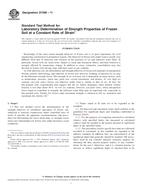
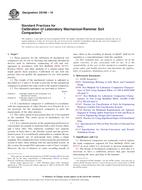 ASTM D2168-10
ASTM D2168-10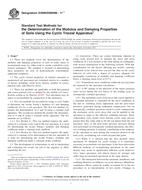 ASTM D3999/D3999M-11..
ASTM D3999/D3999M-11..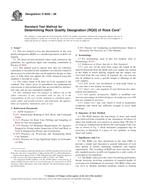 ASTM D6032-08
ASTM D6032-08 ASTM D6066-11
ASTM D6066-11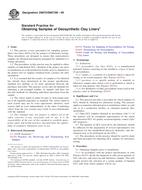 ASTM D6072/D6072M-09..
ASTM D6072/D6072M-09..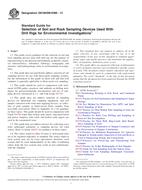 ASTM D6169/D6169M-13..
ASTM D6169/D6169M-13..
 Cookies
Cookies
